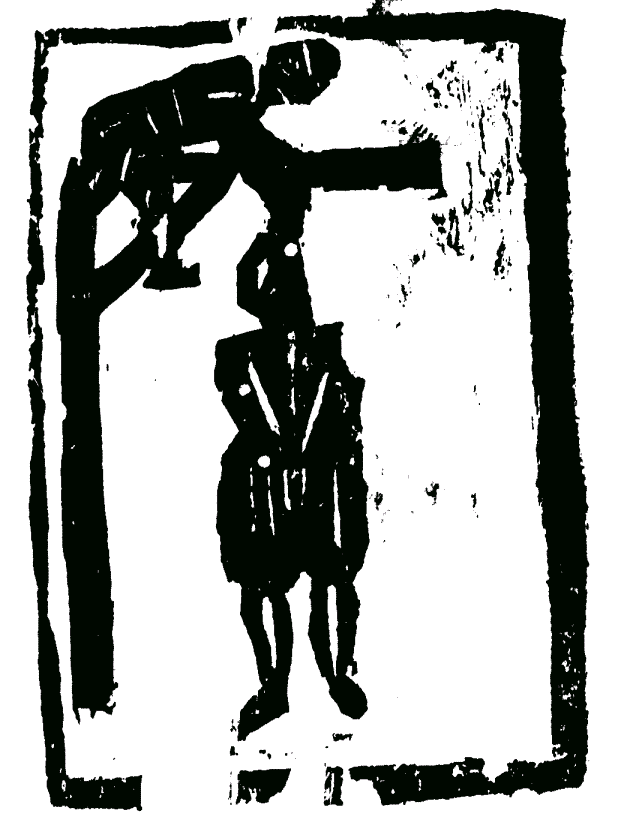
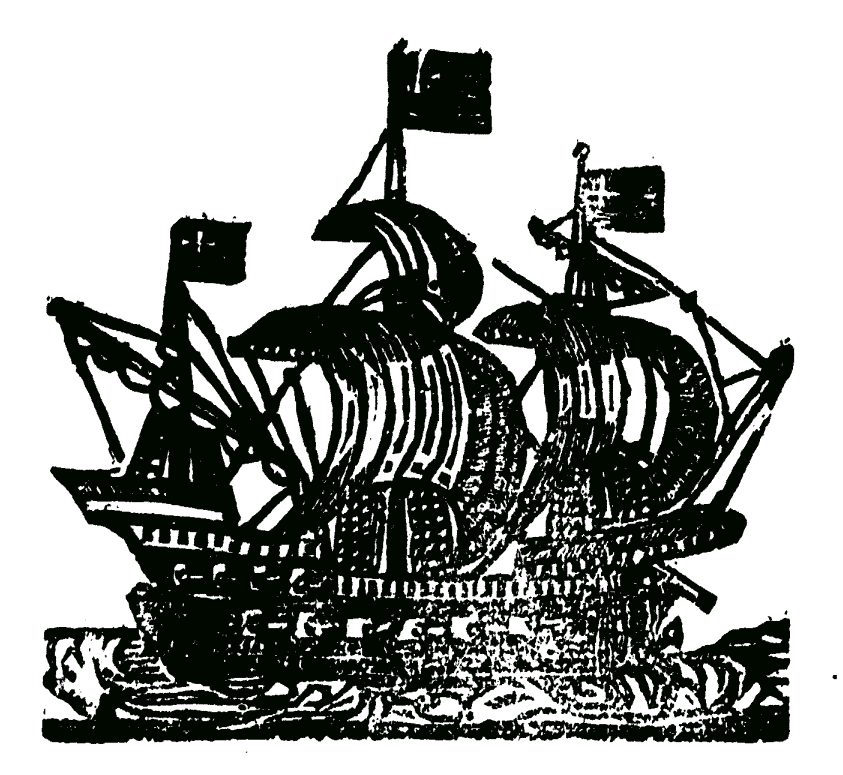

|
The Campden Wonder |

|
||
| "Time, the great Discoverer of Truth, shall bring to Light this dark and mysterious Business" | ||||
|
|
|
|
|
|
A representation of Campden House prior to its destruction
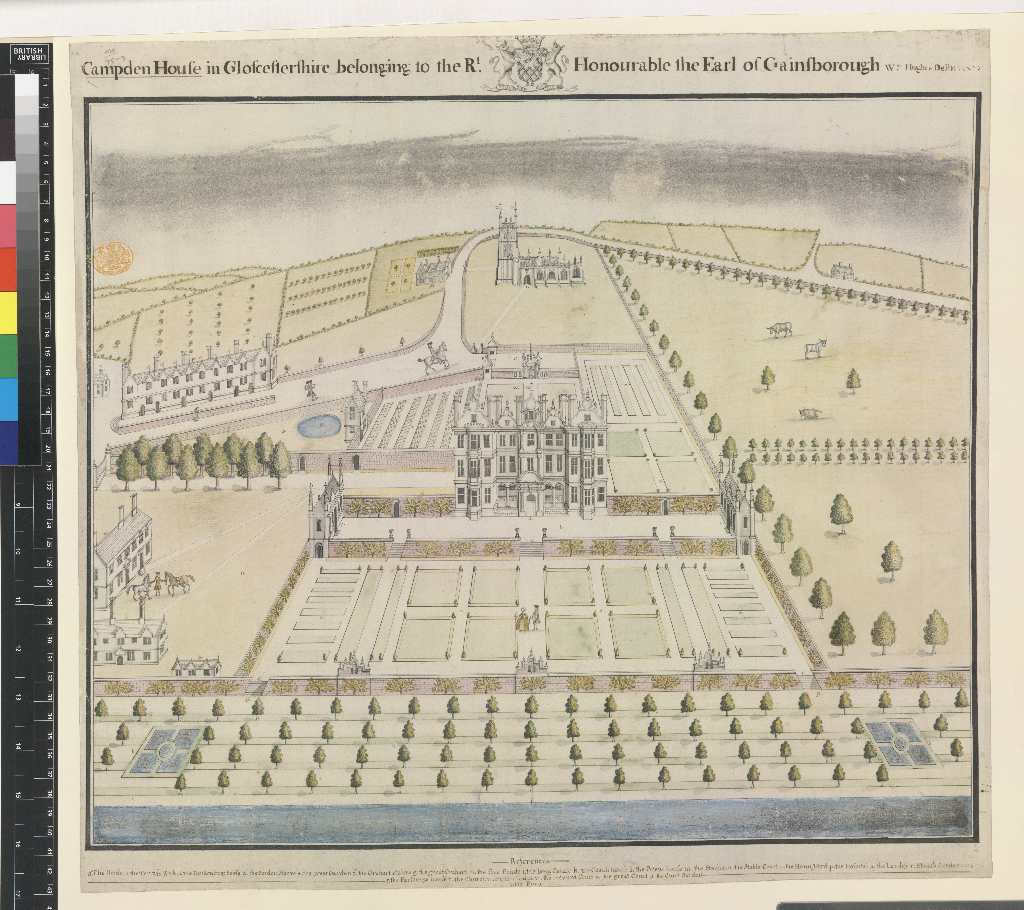
This picture of the way Campden House looked before it burnt down in 1645 gives a good impression of the magnificence of the building, its formal gardens and its setting, adjacent to the church and churchyard. For researchers of the Campden Wonder, it is also priceless for its help in understanding the movements John Perry claims he and his family made on the night of Harrison's disappearance.
Various parts of the house and its grounds are labelled a-y on this (intriguingly rather different) version of the same picture, as reproduced by Rushen.
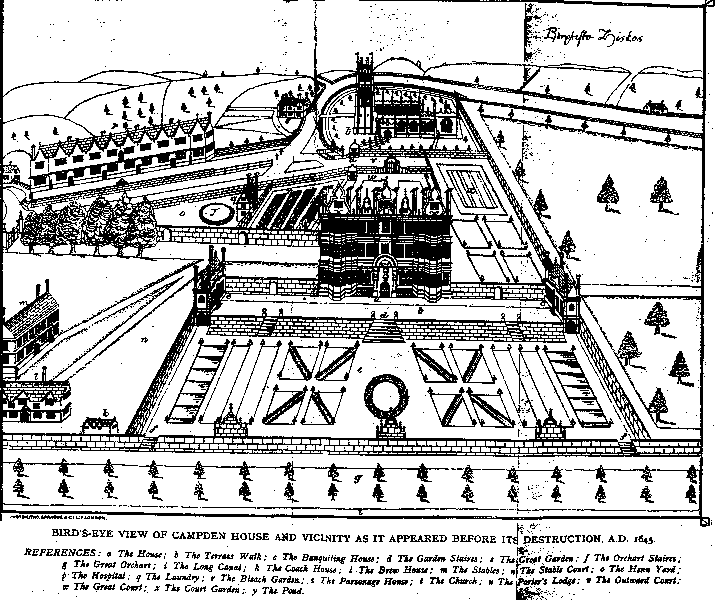
The following are of great interest to us here.
w The Great Court
These are located between the main house and the church. Alongside the letter v is clearly drawn a gate, leading from the Outward Court into the Great Court. It seems very likely that this is the gate which is called Harrison's Court-gate in Perry's statement as related by Overbury.
It seems highly likely that the hen roost in which Perry claims to have spent part of the night of Harrison's disappearance would be situated in this area, which is shown on the plan above to the left of the main house, to the right of a clump of trees, next to a pond.
Let's have a look a Perry's supposed movements in some detail.
When first questioned by the magistrate about his actions on the night of Thursday 16th August 1660, John Perry's story is as follows.
Some time between eight and nine o'clock (as he probably knew from hearing the church clock strike eight but not yet nine), Mrs Harrison had sent Perry to look for his master, who was late returning home.
He first goes down to Campden Field, towards Charringworth, about a "land's length" (probably one furlong or 220 yards). The road to Charringworth and Ebrington can be clearly seen on the plan above: it is the road which loops around behind the church. "Campden Field" probably means the then unenclosed common land. It may be this which is depicted in the top right of the plan, above the road and below the facsimile of Sir Baptist Hicks' signature.
Perry meets one William Reed of Campden and tells him, as it was then growing dark, he would prefer to go back and return with Harrison's son Edward and Edward's horse. So they return together to "Mr. Harrison's Court-gate", at which point Reed goes off alone. This seems very likely to be the gate depicted in the view of Campden House as leading from the Outward Court into the Great Court.
It must be borne in mind that, when questioned, Reed confirms this part of Perry's story.
Next, a man called Pierce passes by, and Perry again goes off into "the Fields" (presumably the common again) with him, before coming back with him to Harrison's gate. Again, we must remember that when he was questioned, Pierce testified to the truth of this part of Perry's statement.
Then Perry says that he went into "his Master's Hen-roost" to lie down, and that he stayed there until the clock struck midnight. This hen roost was probably located in the area marked on the plan as the "Henn Yard"
Perry then goes off towards Charringworth again, supposedly emboldened by the fact the moon had now risen.
Perry's later story is as follows.
After being sent out by Mrs Harrison to look for her husband, he met his brother Richard "in the Street, before his Master's Gate". Assuming this gate to be the one shown in the plan above, next to the letter v, it would appear that they met (supposedly) in the street between the churchyard and the former court area.
At this point they split up, so Perry says. Perry takes the path that still leads across the churchyard and which can be seen in the plan above, while Richard takes the longer route along the road around the church. The meet up again round the back of the church on the main road.
They now set off down the road to Charringworth, until they reach "a Gate Bow's Shot from Campden Church, that goes into a Ground of the Lady Campden's, called the Conygree (which to those, who have a Key to go through the Garden, is the next Way from that Place to Mr Harrison's House)". The area of land shown to the right of the church in the drawing (shown containing a row of 4 trees and another row of two trees at right-angles to it) is still know as the "Coneygree" to this day, and a footpath runs across this patch of land from the road towards the ruins of Campden House. It seems likely that this path existed in Harrison's day and that at that time there was a lockable gate at the point where the path reached the road.
If that was the quickest way to Harrison's house, then it seems probable that Harrison was living in the largest surviving part of the old Campden House, namely the East Banqueting House, labelled c in the drawing, and shown to the right and slightly below the main house. This building still stands and is indeed still inhabited, now being owned and rented out by the Landmark Trust. The Landmark Trust are in the process of restoring the West Banqueting House too.
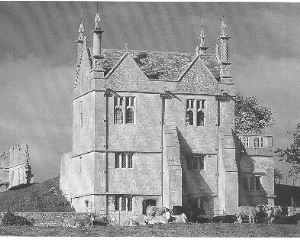
The East Banqueting House, Chipping Campden. Is this where Harrison was living at the time of his disappearance?
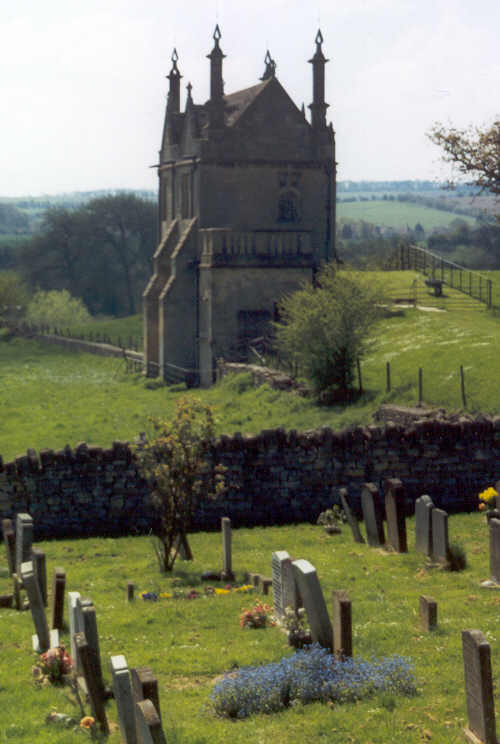
The East Banqueting House, seen from the churchyard
Harrison appears to have been in the habit of using the footpath across the Coneygree as a short-cut from the road to his house, and, according to Perry's confession, it was in the middle of the Coneygree that Harrison was "murdered".
Rushen, on the other hand, states that Harrison was living in the Court House at the time of this disappearance, but gives no evidence to support this.

The Court House, standing at the top of Calf Lane. It was converted in 1650 by Lady Julain (Sir Baptist Hicks eldest daughter) from the stables of Campden House to be her home.
John Perry then says that he and his brother Richard carried the body into the adjoining garden (probably he meant the Court Garden shown at x on the plan above). There they debated what should be done with the body and decided to throw it into "the great Sink, by Wallington's Mill, behind the Garden". This location is, as yet, unclear.
John Perry says that he did not actually see the body being disposed of, since he had been sent to listen out for anyone stirring up at the house. He then went to the "Court-gate" and it was there that he met John Pearce. There is no mention of William Reed in John Perry's confession, despite that fact that Pearce/Pierce, when questioned, stated that he had met John Perry that night.